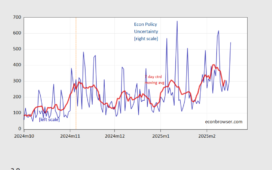Yves here. This is far from the first time that outdoor temperatures have played a big role in the treatment of exposed workers. In the US, cotton farming slaves were treated as assets: sold, traded, even used as collateral for financing. By contrast, slaves in Haiti, used in for much harsher sugar cultivation, were treated as disposable. They were worked until they died and were replaced by new shipments.
It is not hard to imagine , as this article signals, outdoor laborer will again be too often treated as expendable, even if employers and governments maek considerable efforts to hide that fact.
By Kurt Cobb, a freelance writer and communications consultant who writes frequently about energy and environment. Originally published at OilPrice
- Rising global temperatures are leading to unsafe working conditions for outdoor laborers, including Disney employees and farmworkers.
- Heat-related health incidents and fatalities are increasing, posing significant risks to worker well-being and productivity.
- The economic burden of extreme heat includes higher costs for employers, reduced output, and increased food prices.
Who will pay for the cost of overheated humans in the age of climate change?
One of the inevitable consequences of climate change is that in most places temperatures will rise. This may seem welcome (at least for a while) in cooler regions, but most people live in temperate and tropical zones. When the Walt Disney Co. built Disney World in central Florida—it opened in 1971—the location was warm and sunny three seasons of the year, even if a little hot in the summer.
Now, central Florida is not just a little hot in the summer; it has become unbearable for many of Disney World’s employees who must work outside, some of them wearing heavy costumes while playing such roles as Mickey Mouse, Goofy, and Disney princesses. With the local heat index rising above 100 degrees F, outdoor workers are becoming overheated and complaining about lack access to shade, water and adequate break time. Recently, a broken air-conditioner in a waiting room for actors led to two fainting incidents—after which the air-conditioner was repaired.
Of course, Disney workers aren’t the only ones suffering from overheating. Those working in farm fields aren’t there to entertain people, but to do heavy work in the noonday sun. The Environmental Defense Fund (EDF) reports that farmworkers suffer heat-related mortality at rates 20 times those of other workers. The EDF calculates that 2 million farmworkers in the United States now face 21 days a year during which heat conditions are unsafe. But climate change is a moving target. If global greenhouse gas emissions peak at mid-century, that would add an additional 18 days of unsafe heat conditions.
So, the question arises: Who will pay the cost of the overheated work environment? In Florida, apparently the cost will be the foisted on workers in the form of heat-related health incidents and perhaps even more heat-related deaths as the Florida legislature has passed a bill that prevents municipal governments from promulgating heat-related work rules to protect workers. For many workers, protection from heat can now only come through union contracts.
According to the Orlando Weekly article linked above, “Just three states in the U.S. — California, Oregon and Washington — require heat breaks for outdoor workers, while only Minnesota and Oregon currently have heat safety regulations for indoor workers.” But, climate change is now making overheated humans a growing issue.
The problem is showing up in India, much of which is tropical, where outdoor work becomes more and more unbearable as the temperature rises. Consulting firm McKinsey & Co. projected in a 2020 report “that India could become one of the first places in the world to experience heat waves that cross the survivability limit for a healthy human being resting in the shade, and this could occur as early as next decade.” Contemplate that for a minute: An Indian working outdoors won’t even be able to avoid dangerous overheating while “resting in the shade.”
Those who will bear the costs include anyone who works outside such as construction workers, farmworkers, athletes playing outdoors, employees in outdoor entertainment and sports venues, and the list goes on and on. Ultimately, all of us will pay in the form of higher costs to attract workers to work in more dangerous outdoor environments, in the form of lower productivity for those that do, and in the form of higher food costs as crop yields suffer under the stress of heat (and also under the increasingly violent floods that are accompanying climate change).
Pretending that excessive heat is not a problem that employers will have to face as the Florida legislature has done will only make matters worse. Of course, our global society could also do something about the actual cause of rising temperatures. But, so far we are only dealing with the symptoms—or, in this case, simply ignoring them.













